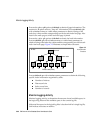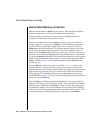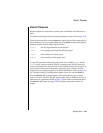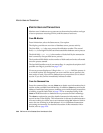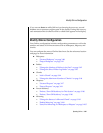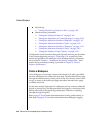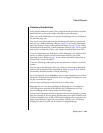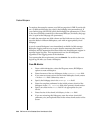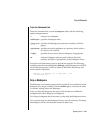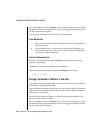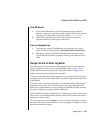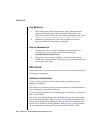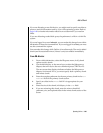
3-88 IBM Informix OnLine Database Server Administrator’s Guide
Create a Blobspace
■ Physical log
❑ “Change Physical Log Location or Size” on page 3-107
■ Shared-memory parameters
❑ “Change the Checkpoint Interval” on page 3-109
❑ “Change the Destination of Console Messages” on page 3-110
❑ “Change the Maximum Number of Dbspaces” on page 3-111
❑ “Change the Maximum Number of Locks” on page 3-112
❑ “Change the Maximum Number of Tblspaces” on page 3-113
❑ “Change the Maximum Number of Users” on page 3-114
❑ “Change the Number of Page Cleaners” on page 3-115
Configuration issues that affect the logical logs and archiving are described
in the sections beginning on page 3-13 and page 3-43, respectively. Infor-
mation and guidelines for setting the value of shared-memory parameters
are provided in Chapter 1, “Installation and Initial Configuration.” Infor-
mation about performance tuning is provided in Chapter 5, “How to
Improve Performance.”
Create a Blobspace
Use a blobspace to store large volumes of BYTE and TEXT data types. Blobs
stored in a blobspace are written directly to disk. The blob data does not pass
through the shared-memory buffer pool. If it did, the volumes of data could
occupy so many of the buffer-pool pages that other data and index pages
would be forced out.
For the same reason, blobs stored in a blobspace are not written to either the
logical or physical log. The blobspace blobs are logged by writing the blobs
directly from disk to the logical log backup tapes, without ever passing
through the logical log files.
Refer to page 2-78 for further information about writing a blob directly to
disk. Refer to page 4-22 for further information about blobspace logging.



